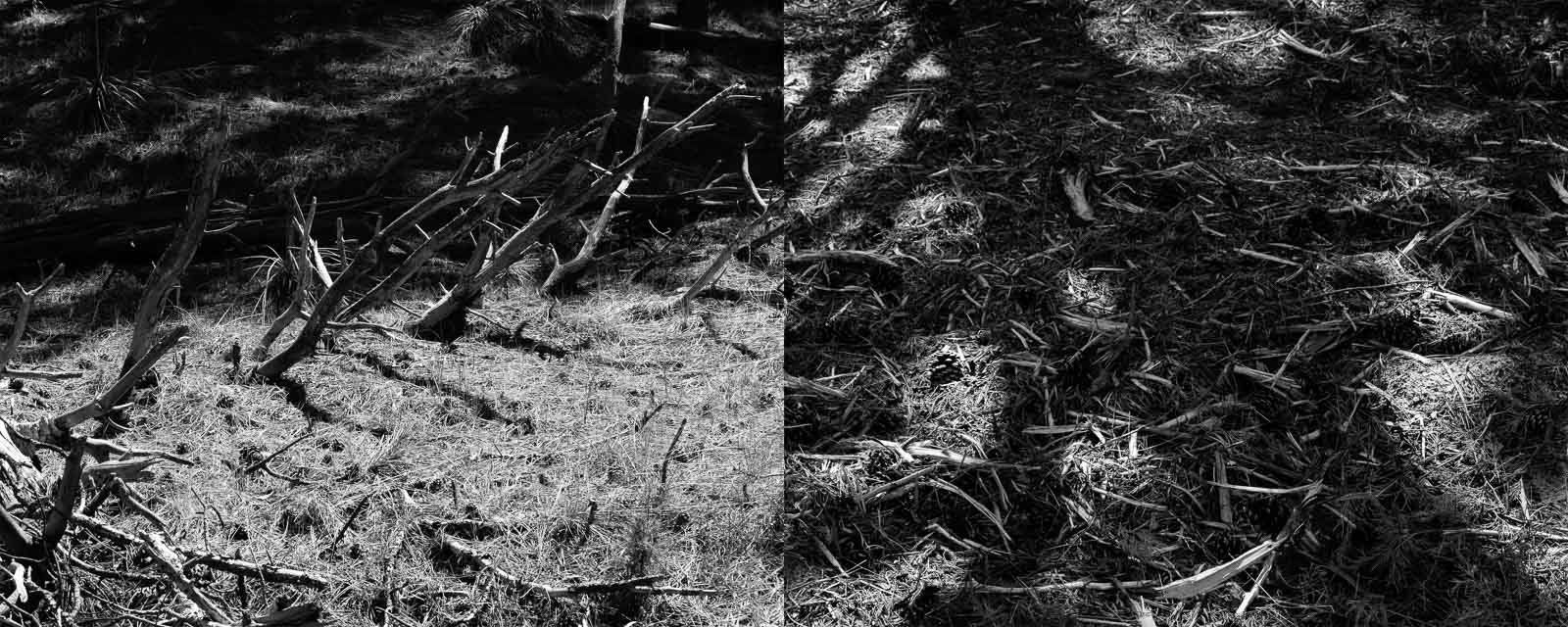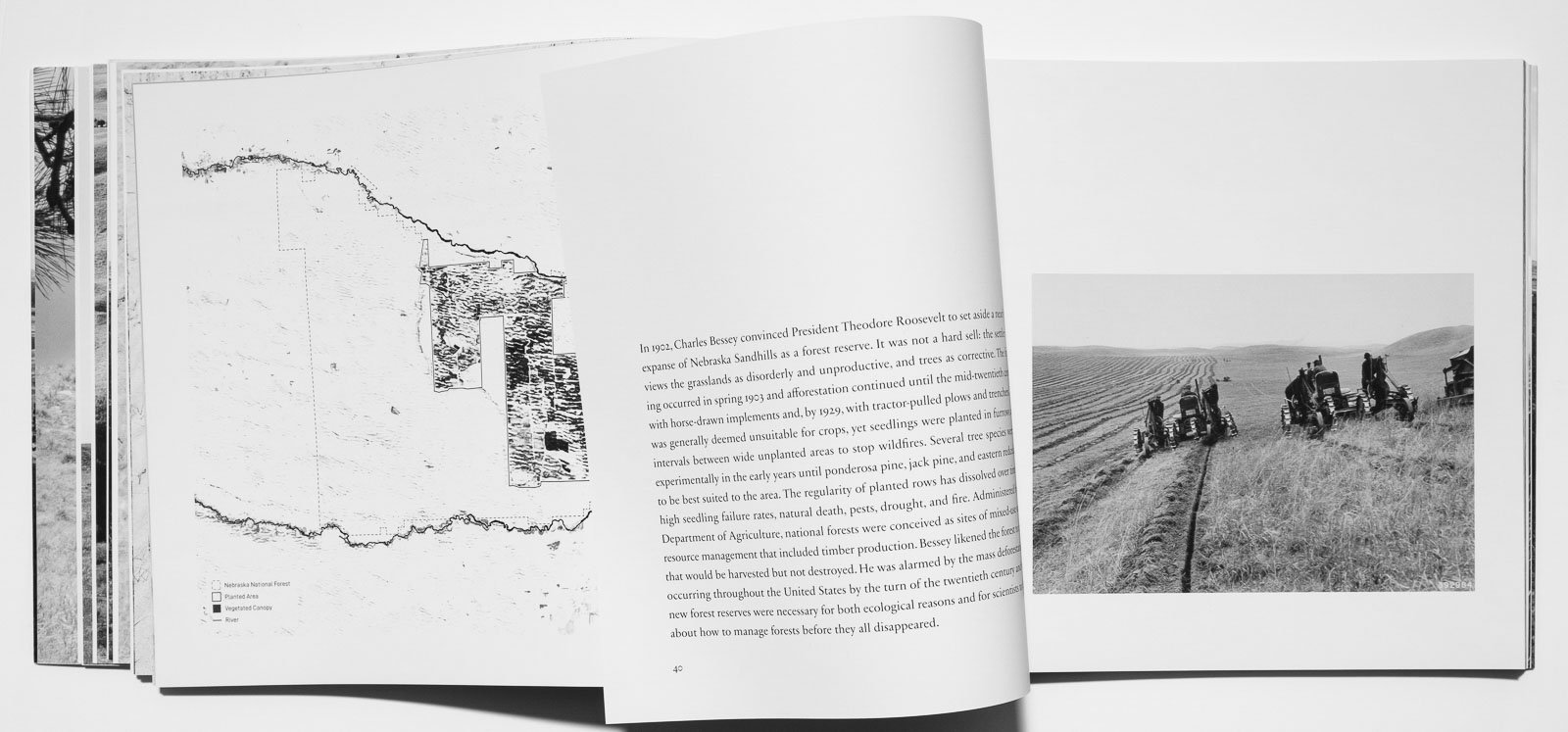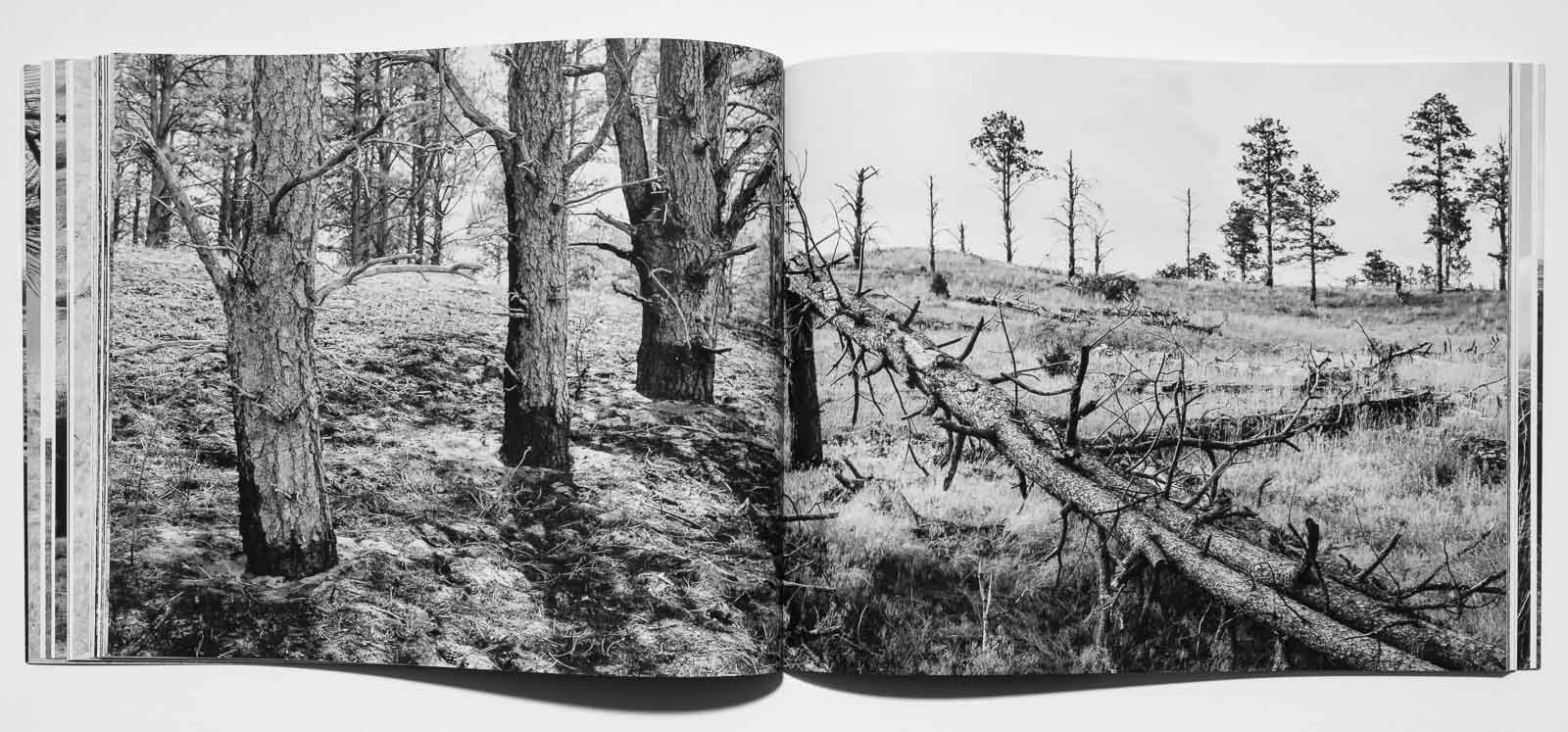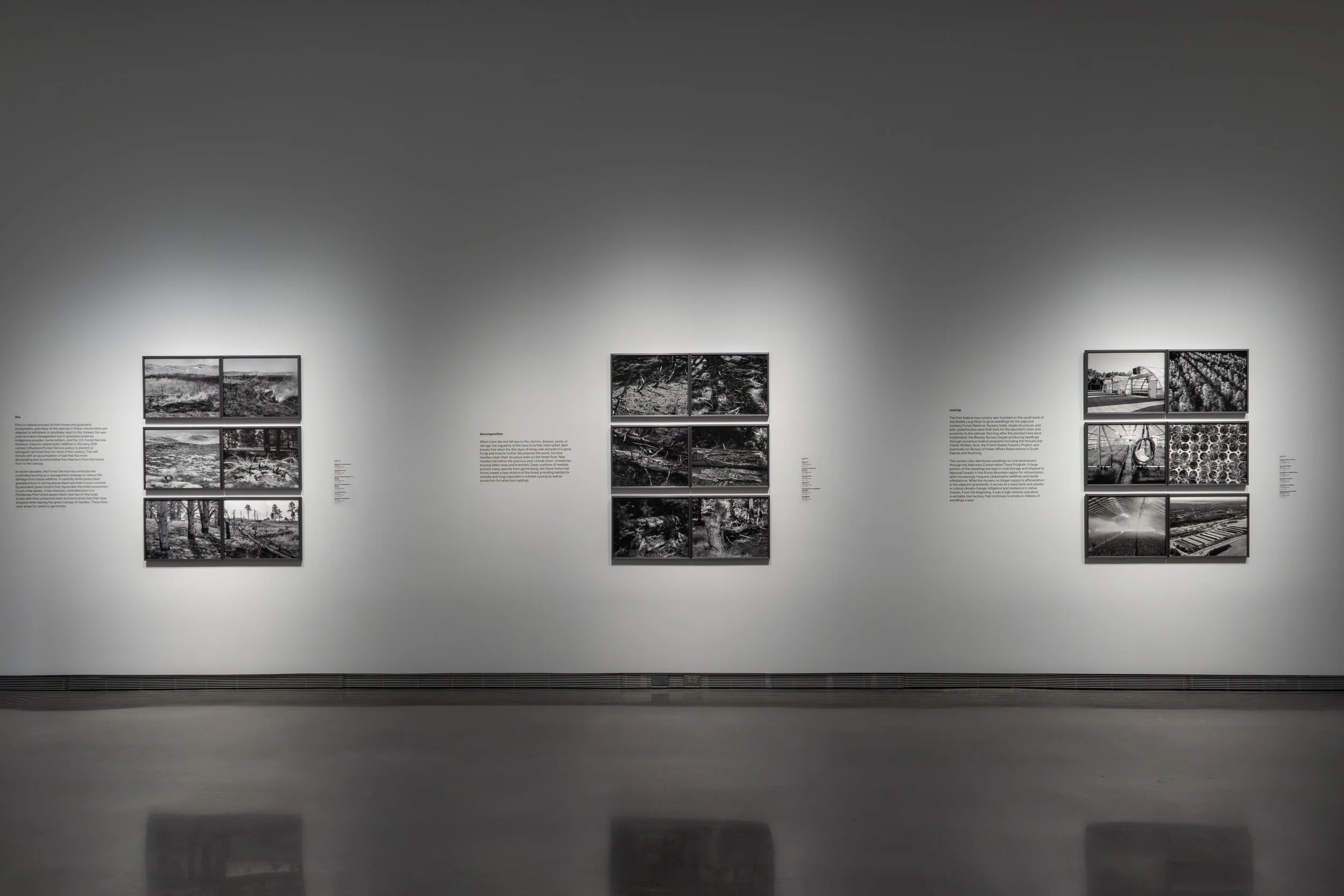Field Guide to a Hybrid Landscape
Field Guide to a Hybrid Landscape makes visible the forces that shaped the Nebraska National Forest at Halsey, once the world’s largest hand-planted forest. Wind, water, planting, thinning, burning, decomposing, and sowing all contribute to its unique environmental history. A conifer forest was overlaid onto a semi-arid grassland just west of the 100th meridian in an ambitious late 19th century idea to create a timber industry, and to change the local climate. At that time, tree-planting was not considered in terms of carbon sequestration, but as a way to mitigate the wind and evaporation of moisture and to bring order to a disorderly landscape.
While the planners seemed not to appreciate the particular grassland ecosystem of the Nebraska Sandhills managed through grazing and fire until dispossession, they did recognize the reliable water from the Dismal and Middle Loup Rivers that bound the site. Later it was discovered that under all those grass-stabilized sand dunes was the massive Ogallala Aquifer that feeds the rivers through springs. This seemingly unlimited source of water below made it possible to plant a forest on the dry land above where the wave pattern on the riverbeds is mirrored in the larger scale sand dunes. In 1902, the first federal nursery was founded to produce trees for the new forest and for plains homesteads. That same year a forest reserve was officially established in the grasslands where 31 square miles of trees would be planted.
Historical fire suppression and misguided plantings, (some never taking hold, and others that have become invasive,) present ongoing management challenges for foresters. While afforestation is no longer in practice at Nebraska National Forest, the on-site Bessey Nursery now grows replacement seedlings for burned and beetle-damaged National Forests in the Rocky Mountain region as well as the Nebraska Conservation Trees Program. This unique experiment of row-crop trees that were protected from the natural cycle of fire for decades, yet never commercially harvested for timber, provides a rich metaphor for our current environmental predicaments. This hybrid landscape has evolved from a turn of the 20th century effort to reclaim with trees what was called “The Great American Desert” to a focus on 21st century conservation, grassland restoration, and reforestation, all of which work to sequester carbon, maintain natural ecosystem balance, and mitigate large-scale climate change.
See a selection of the photographs here and the limited artist book here.
A trade book was published by University of Nebraska Press in January 2023.
The first venue for this traveling exhibition was the Great Plains Art Museum in Lincoln, Nebraska (September 2, 2022 - March 11, 2023.)
An exhibition prospectus is available here.
PRINTS
Trade BOOK
Photographs by Dana Fritz | Essays by Katie Anania, Rebecca Buller, and Rose-Marie Muzika | Maps by Salvador Lindquist
144 pages | 78 photographs, 2 illustrations, 9 maps
Paperback | January 2023 | 978-1-4962-2777-5
Order from University of Nebraska Press
In Field Guide to a Hybrid Landscape Dana Fritz traces the evolution of the Bessey Ranger District and Nursery of the Nebraska National Forest and Grasslands. Fritz’s contemporary photographs of this unique ecosystem, with provocative environmental essays, maps, and historical photographs from the U.S. Forest Service archives, illuminate the complex environmental and natural history of the site, especially as it relates to built environments, land use, and climate change.
The Nebraska National Forest at Halsey, as it is known colloquially, is the largest hand-planted forest in the Western Hemisphere, and formerly in the world. This hybrid landscape of a conifer forest overlaid onto a semiarid grassland just west of the one-hundredth meridian was an ambitious late nineteenth-century idea to create a timber industry, to reclaim a landscape considered disordered and unproductive, and to change the local climate in northcentral Nebraska. While the planners seemed not to appreciate the native grasslands that form the ecosystem of the Nebraska Sandhills, they did recognize the reliable water from the Dismal and Middle Loup Rivers that border the site. In 1902 the first federal nursery was established as part of the Dismal River Forest Reserve to produce seedlings for plains homesteads and the adjacent treeless tract of land. At that time tree planting was not used for carbon sequestration but to mitigate the wind and evaporation of moisture.
The Bessey Nursery now produces replacement seedlings for burned and beetle-damaged forests in the Rocky Mountains and for the Nebraska Conservation Trees Program. This constructed landscape of row-crop trees that were protected from fire for decades, yet never commercially harvested for timber, provides a rich metaphor for current environmental predicaments. The late nineteenth-century effort to reclaim with trees what was called the Great American Desert has evolved to a focus on twenty-first-century conservation, grassland restoration, and reforestation, all of which work to sequester carbon, maintain natural ecosystem balance, and mitigate large-scale climate change. Field Guide to a Hybrid Landscape offers a visual and critical examination of this unique managed landscape, which has implications far beyond its borders.




















































